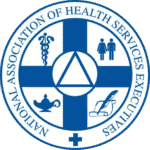Graduating from medical school must feel like a huge achievement, but the massive debt most clinicians face after graduation must also feel like a huge burden.
The average annual cost of attending medical school last year was about $37,000 per year for in-state students and nearly $61,000 for out-of-state attendees, according to U.S. News & World Report.
But it’s become standard in the competitive world of healthcare recruiting for health centers to offer some kind of signing bonus to attract physicians. Many of these rewards often come with a time commitment for the provider to work at the health center for several years. There are also federal and state loan repayment programs to help the new graduate start with a clean financial history after graduation. This article will look at how new doctors can reduce and in some cases erase their debt and serve their community all at the same time.
Loan Repayment Programs
Loan forgiveness covers any of the three main primary care segments of behavioral health, clinical medicine, or dentistry, including:
- Dental Hygienist
- Counselor
- Dentist
- Marriage or Family Therapist
- Nurse
- Nurse Midwife
- Nurse Practitioner
- Primary care physician
- Primary care physician assistant
- Psychologist
- Social Worker
To receive loan forgiveness, the professional must work at an approved site:
- Federally Qualified Health Center (FQHC)
- FQHC Look-Alike
- Rural Health Clinic
- Indian Health Service
- Private Practice
- State or federal correctional facility
- Or another approved facility such as a Free Clinic or a Critical Access Hospital.
There are two primary categories of loan forgiveness in the United States:
- National Health Service Corps (NHSC) benefits healthcare care professionals by allowing them to work in areas that are federally designated healthcare shortage areas and receive, in addition to their competitive salary, tax benefits, a chance to help the community, and up to $50,000 ($25,000/year) in loan repayment for two years of service, tax-free. Physicians participating in the program can even extend by year if they need additional loan forgiveness. The amount of assistance depends on the area of service, location, and type of clinic. Look for areas with the highest need to qualify for the highest award.
- State Loan Repayment Program (SLRP) offers physicians with excessive student loans a grant to help them get out of debt. Physicians, nurses, and clinicians all qualify, along with dentists, physician assistants, and mental health and dental professionals—even pharmacists, can benefit. Each state has a different program, but most are offered through the SLRP. Like the NHSC, these programs focus on giving back to health professional shortage areas (HPSAs). You can see the types of HPSAs at the Association of American Medical Colleges website here.
There can even be a contribution from the clinic to help sweeten the deal for candidates. These “rewards” can be correlated with retention, a signing bonus, productivity, or other permutations.
Is Loan Forgiveness Right For You?
While we’ve focused on the new graduate, HPSA organizations can also work with current clinicians that have been in the field for a while but still have debt accrued.
UHC Solutions works with these healthcare professionals to help place them at FQHCs all around the county. We are the experts that help match healthcare clinicians with the right organization to support their careers. Talk with our team to find out more about your options for loan forgiveness.





